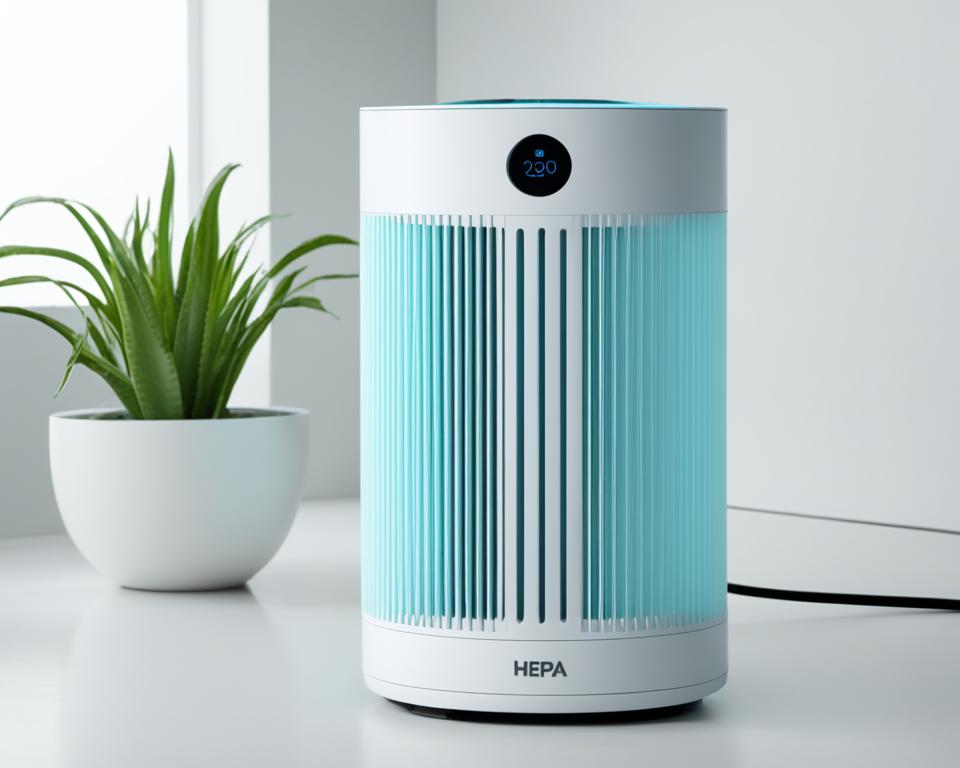I love cats, but some people can’t be around them because of allergies. I’ve dealt with cat allergies too. Luckily, there are natural ways to help without losing your cat.
About 2% of people in the U.S. have cat allergies. Yet, many of us keep our cats despite the allergies. It shows how much we love these pets! While we can’t get rid of all allergy symptoms, we can lessen them. This makes living with cats easier.
In this guide, I’ll talk about natural remedies for cat allergies and controlling pet dander. These tips helped me. They include simple changes at home and what to eat. These can make you breathe easier and enjoy your cat more without worrying about allergies.
Understanding Cat Allergies: Causes and Symptoms

About 10% of people in the U.S. have cat allergies. These allergies can cause a lot of discomfort and even serious reactions. Let’s look into what causes cat allergies, their symptoms, and how they affect us.
What Triggers Cat Allergies?
A protein called Fel d 1 is the main cause of cat allergies. It’s found in cat saliva, skin cells, and urine. When cats groom, they spread this allergen on their fur. This allergen then gets into the air and can stick to things in your home.
Common Symptoms of Cat Allergies
After being around cats, allergy symptoms can show up fast. They include:
- Sneezing and runny nose
- Coughing and wheezing
- Itchy, watery eyes
- Skin irritation or hives
How Cat Allergies Affect Your Body
Your immune system overreacts to the Fel d 1 protein if you’re allergic to cats. This causes inflammation in your respiratory and skin. For some, the reaction can be very bad. In fact, 20% to 30% of people with allergic asthma get worse when around cats.
| Allergy Treatment | Effectiveness | Notes |
|---|---|---|
| Antihistamines | Moderate | Quick relief of symptoms |
| Nasal sprays | High | Reduces inflammation |
| Immunotherapy | Variable | Long-term solution, takes time |
Antihistamines and nasal sprays help quickly. Immunotherapy works to lessen sensitivity over time. But, avoiding cat allergens is the best way to manage cat allergies.
Natural Remedies for Cat Allergies: Effective Solutions

I’ve found some great natural ways to tackle cat allergies. These solutions can help you breathe easier and enjoy your feline friend without the sneezing fits. Let’s dive into some effective remedies that don’t require a prescription.
Herbal remedies are a popular choice for allergy relief. Stinging nettle, butterbur, and quercetin have shown promise in reducing allergy symptoms. These natural antihistamines can help calm your body’s reaction to cat allergens.
Air purifiers with HEPA filters are a game-changer. They trap tiny particles, including cat dander, keeping your air cleaner. I’ve noticed a big difference in my home since using one.
Dietary changes for your cat can make a surprising impact. Feeding your cat a diet rich in omega-3 fatty acids can reduce shedding and dander production. Some specialty cat foods even claim to reduce allergens by up to 47%!
“I thought I’d have to give up my cat, but these natural remedies have been a lifesaver. My allergies are under control, and I get to keep my furry friend.”
Here’s a quick comparison of some popular natural remedies:
| Remedy | Effectiveness | Ease of Use |
|---|---|---|
| HEPA Air Purifiers | High | Easy |
| Herbal Supplements | Moderate | Easy |
| Saltwater Rinses | Moderate | Moderate |
| Probiotics | Low to Moderate | Easy |
Remember, while these natural remedies can be effective, it’s always best to consult with an allergist if your symptoms persist or worsen. With the right combination of strategies, you can find relief and keep your feline friend close.
Environmental Management: Reducing Allergen Exposure

Managing my home environment is key to controlling pet dander. It involves several strategies to lessen allergen exposure. This makes my living space healthier.
HEPA Air Purifiers: A Breath of Fresh Air
HEPA air purifiers are a big help for allergy sufferers. They filter out almost 98% of allergens from the air. Since I got one, I’ve seen a big change in air quality at home.
Regular Cleaning and Vacuuming Techniques
Cleaning often is key for managing the environment. I use a CERTIFIED asthma & allergy friendly® vacuum to stop allergens from getting back into the air. It’s vital to clean surfaces a lot, as allergens stick around.
Creating Cat-Free Zones in Your Home
Having areas without cats, like bedrooms, helps keep allergens away. This has really helped me. Even after cleaning, it can take up to six months for cat allergens to go away in a house.
| Allergen Source | Size (microns) | Airborne Duration |
|---|---|---|
| Cat Dander | 2.5-10 | 30+ minutes |
| Dog Dander | 5-10 | 10-20 minutes |
| Dust Mites | 10-40 | Few minutes |
With these environmental management tips, I’ve cut down on allergens at home. Now, it’s a more comfy place for everyone.
Dietary Changes and Supplements for Allergy Relief
I’ve found that making dietary changes and using natural antihistamines can be game-changers for managing cat allergies. Apple cider vinegar has been a lifesaver for me. It’s full of natural antihistamine properties that lessen allergy symptoms.
I also eat foods rich in probiotics like yogurt and kefir. These foods boost my immune system and cut down on inflammation.
For allergy supplements, quercetin and bromelain work well for me. Quercetin is a natural antihistamine and anti-inflammatory. Bromelain helps with nasal swelling and makes mucus thinner. These supplements have made a big difference in my life during allergy season.
I’ve also tried stinging nettle extract. It helps with sneezing and itching.
For fast relief, I use a natural nasal spray with saline and eucalyptus oil. It clears my sinuses and lessens inflammation. But, it’s important to talk to a healthcare professional before starting any new supplements. Everyone’s body is different, and what works for me might not work for you. The aim is to find a safe and effective way to deal with cat allergies.

